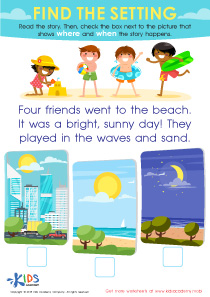Easy Addition & Subtraction worksheets activities for Ages 7-9
5 filtered results
-
From - To
Welcome to our Easy Addition & Subtraction Worksheets for Ages 7-9! Designed for young learners, these engaging worksheets help reinforce essential math skills through enjoyable activities. Each worksheet focuses on basic addition and subtraction concepts, challenging students to solve problems with increasing complexity while building confidence in their abilities. Our activities cater to various learning styles, ensuring every child can benefit. With vibrant illustrations and playful themes, children will stay motivated to practice their math skills. Whether used in the classroom or at home, these worksheets are the perfect tool to support your child's learning journey in a fun and effective way!


Adding and Subtracting to 1 Worksheet: Assessment 2


Addition and Subtraction Assessment 2 Worksheet


Adding and Subtracting to 1 Worksheet: Assessment 1


Addition and Subtraction Within 1: Assessment 2 Worksheet


Addition and Subtraction Within 1: Assessment 3 Worksheet
Parents and teachers should prioritize Easy Addition and Subtraction activities for children aged 7-9 because these foundational math skills are crucial for overall academic success. At this age, children are transitioning from basic arithmetic to more complex mathematical concepts, and solidifying their understanding of addition and subtraction lays the groundwork for future learning in mathematics.
Engaging activities not only make learning fun but also promote critical thinking, problem-solving skills, and number sense. As children practice these operations through games, puzzles, and hands-on activities, they gain confidence in their abilities, which is essential for fostering a positive attitude toward math. Additionally, integrating real-life scenarios into these activities helps children see the relevance of math in everyday situations, making it more meaningful.
Moreover, frequent practice with addition and subtraction improves fluency, enabling children to perform calculations quickly and accurately, which is vital as they encounter more abstract concepts. Involving parents in these activities strengthens the home-school connection and encourages a collaborative learning environment. Ultimately, fostering proficiency in these essential skills empowers children to tackle the challenges of more advanced mathematics and supports their overall cognitive development.
 Assign to My Students
Assign to My Students



.jpg)












